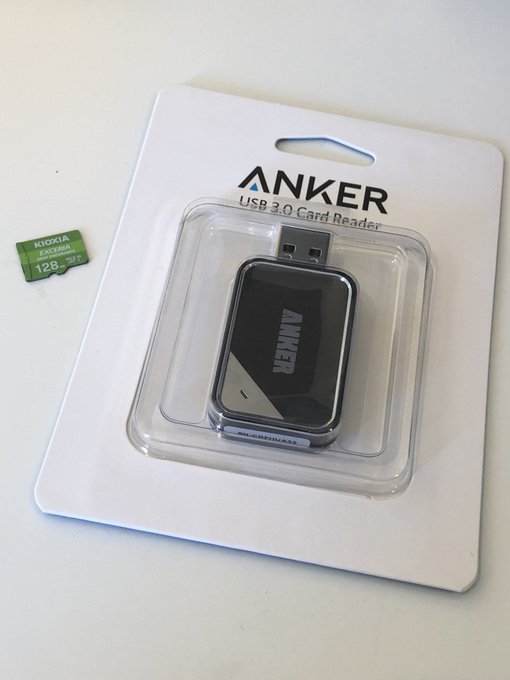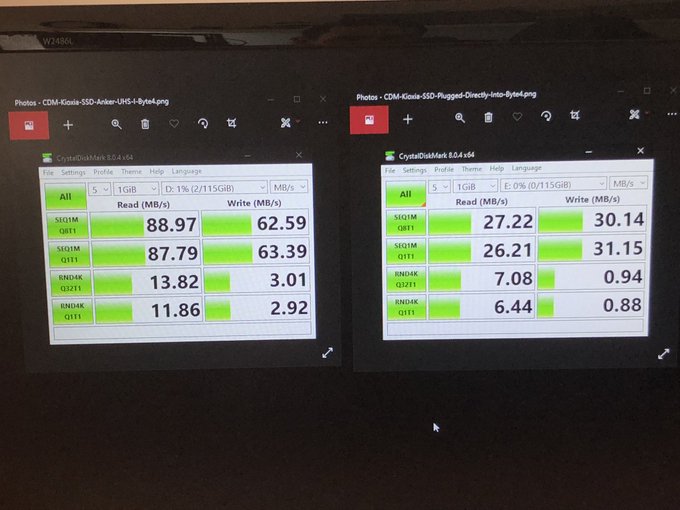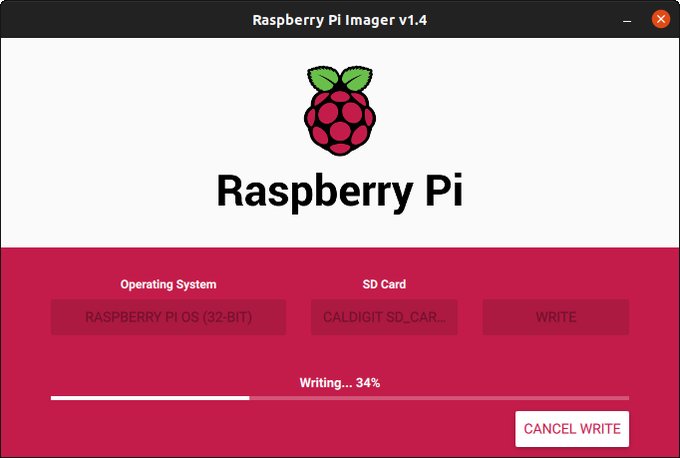Kioxia Exceria 128GB High Endurance microSD Card
With the Steam Deck on the horizon and a renewed interest in fast, high-capacity SD cards (my day job working with Raspberry Pi’s doesn’t normally necessitate anything larger than 16GB) it’s a great time to introduce you to the Kioxia Exceria. Formerly Toshiba Memory the Kioxia brand carries on the flame, bringing a third option for quality conscious buyers. At least… mine’s been fine so far and I’ve run 30GB videogames from it!
HIGH ENDURANCE! pic.twitter.com/wrIzviuQI6
— Phil Howard (@Gadgetoid) June 15, 2021
Testing a microSD card can be a tricky business, with devices supporting so many SD-card standards, and so may proprietary variations upon those, I first had to make sure I matched the UHS-I specified Exceria with an SD card reader that would cut the mustard. I picked Anker’s 2-in-1 USB to UHS-I SD/microSD card reader and it seemed to do the trick.
Using the @AnkerOfficial UHS-I SD card reader and a Kioxia SD card to get a feel for what SD card throughout might be on the @Steam Deck with the @azulletech Byte 4 acting as an eMMC equipped stand-in.
Left is UHS-I and right is the @azulletech Byte 4’s internal SD card slot. pic.twitter.com/wwWi5J4e2R
— Phil Howard (@Gadgetoid) July 16, 2021
Indeed the difference in performance between an internal SD card slot on every a relatively new mini PC (albeit that does not specify UHS-I) versus a reader that’s explicitly UHS-I is night and day. While the theoretical throughput of a UHS-I SD card is 104MB/s Kioxia’s Exercia benched around 87-89MB/s sequential read and 62-63MB/s sequential write. These speeds were sustained while copying many, many gigabytes of files since I used the SD card to test game loading times in Steam to get a feel for how the Steam Deck’s UHS-I SD card might affect them.
Game loading times were surprisingly fast, taking some 60% longer than my generously fast internal NVM.e SSD. The following times were for Shadow of The Tomb Raider in minimum detail:
Loading from Kioxia SD card
- to main menu : 00:32.52
- to Forge of Destiny Challenge Tomb : 00:35.35
- to Path of Huracan Challenge Tomb : 00.28.67
- to Howl of the Monkey Gods Challenge Tomb : 00.32.65
Loading from NVM.e SSD
- to main menu : 00:27.57
- to Forge of Destiny Challenge Tomb : 00:21.20
- to Path of Huracan Challenge Tomb : 00:16.98
- to Howl of the Monkey Gods Challenge Tomb : 00:17.23
Even from the SD card these weren’t long waiting times, suggesting most of the data is loaded sequentially taking advantage of the full performance of the card. For a system where installing, moving, backing up and loading gigabytes of games is a common occurrence the high endurance option seems like a sensible choice, though Kioxia’s claims are 20,000 of full HD recording at 21Mbps which suggests around 9.45Gbits or 1.18gigabytes an hour or a total of around 23,000gigabytes of data written. Since gaming is mostly a read-only operation (depending on how you use your SD card to cycle games out of system memory) this should last about 400, 60GB game installs or one install of Ark: Survival Evolved.
Over in my Raspberry Pi 400 the enormous 128GB of this SD card was mostly wasted, but the endurance counts for system log writes, software installs/compiles and the general humdrum of Linux use- which has apparently killed many an SD card, albeit very, very few of mine. What I appreciated was the blistering fast write times- bumping up from a woeful 15-20MB/s to a sustained 60MB/s made the process of re-flashing Raspberry Pi OS painless. While the Pi isn’t equipped to take advantage of this extra speed the extra endurance could make all the difference in an always-on setup.
Pretty quick! pic.twitter.com/SlKlrn4zNw
— Phil Howard (@Gadgetoid) June 15, 2021
At time of writing the Kioxia Exceria High Endurance 128GB SD card is £34.20 on Amazon with 256GB coming in at £78.11. These are on a par with high endurance prices from other brands, but approximately 2x to 3x the price of regular cards. Are the worth it? I honestly don’t know but if I were picking an SD card to complement a 64GB Steam Deck, this is what I’d pick.



